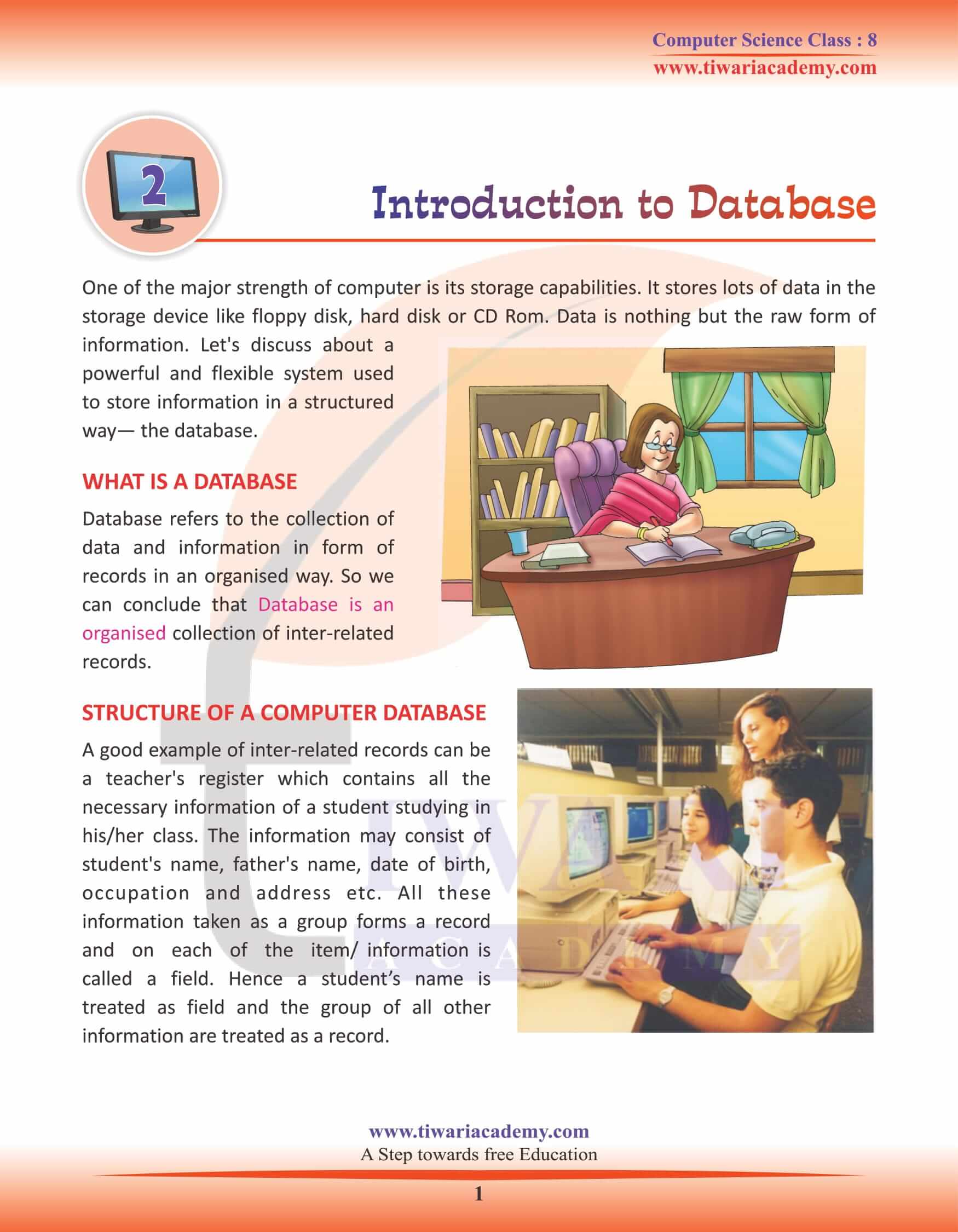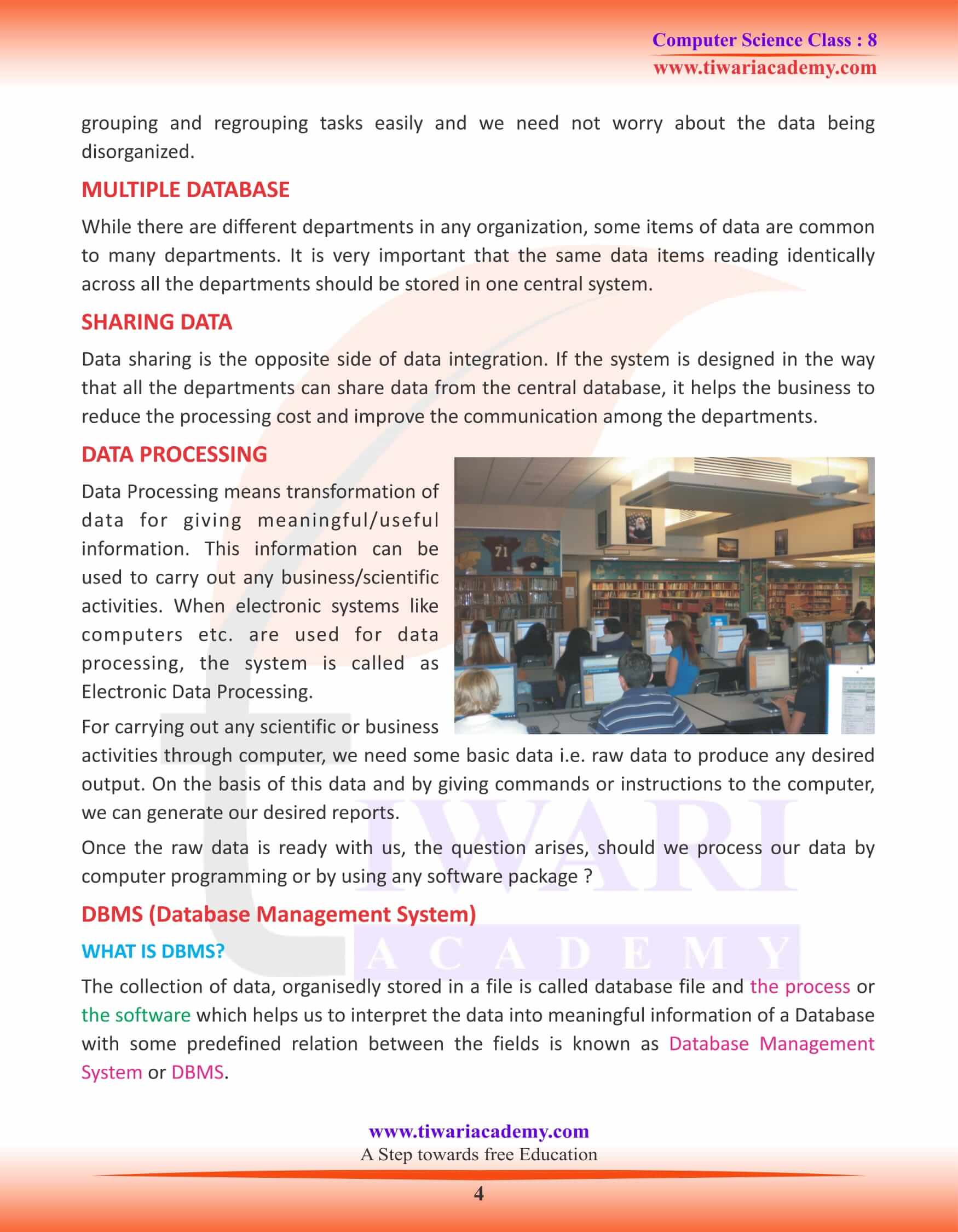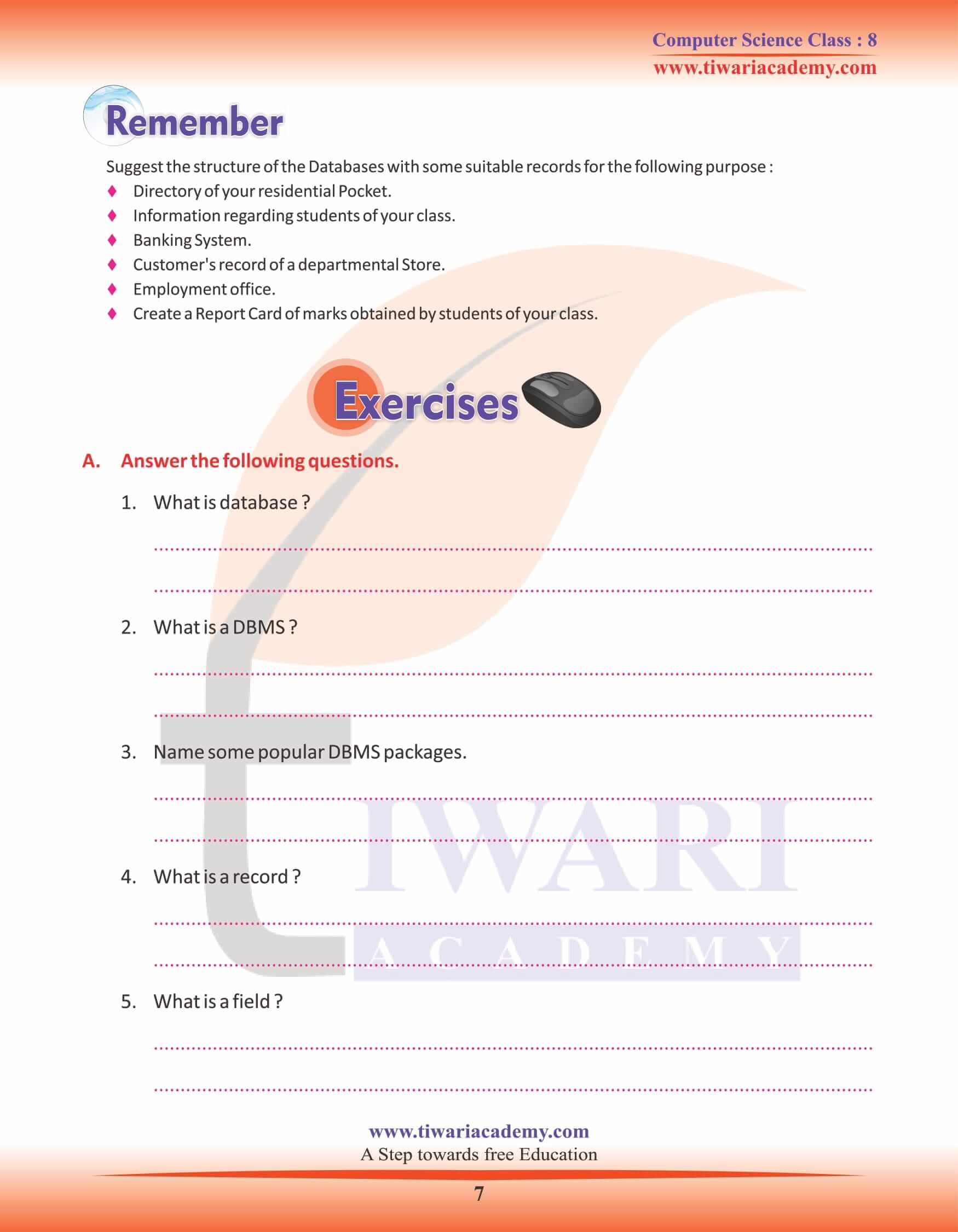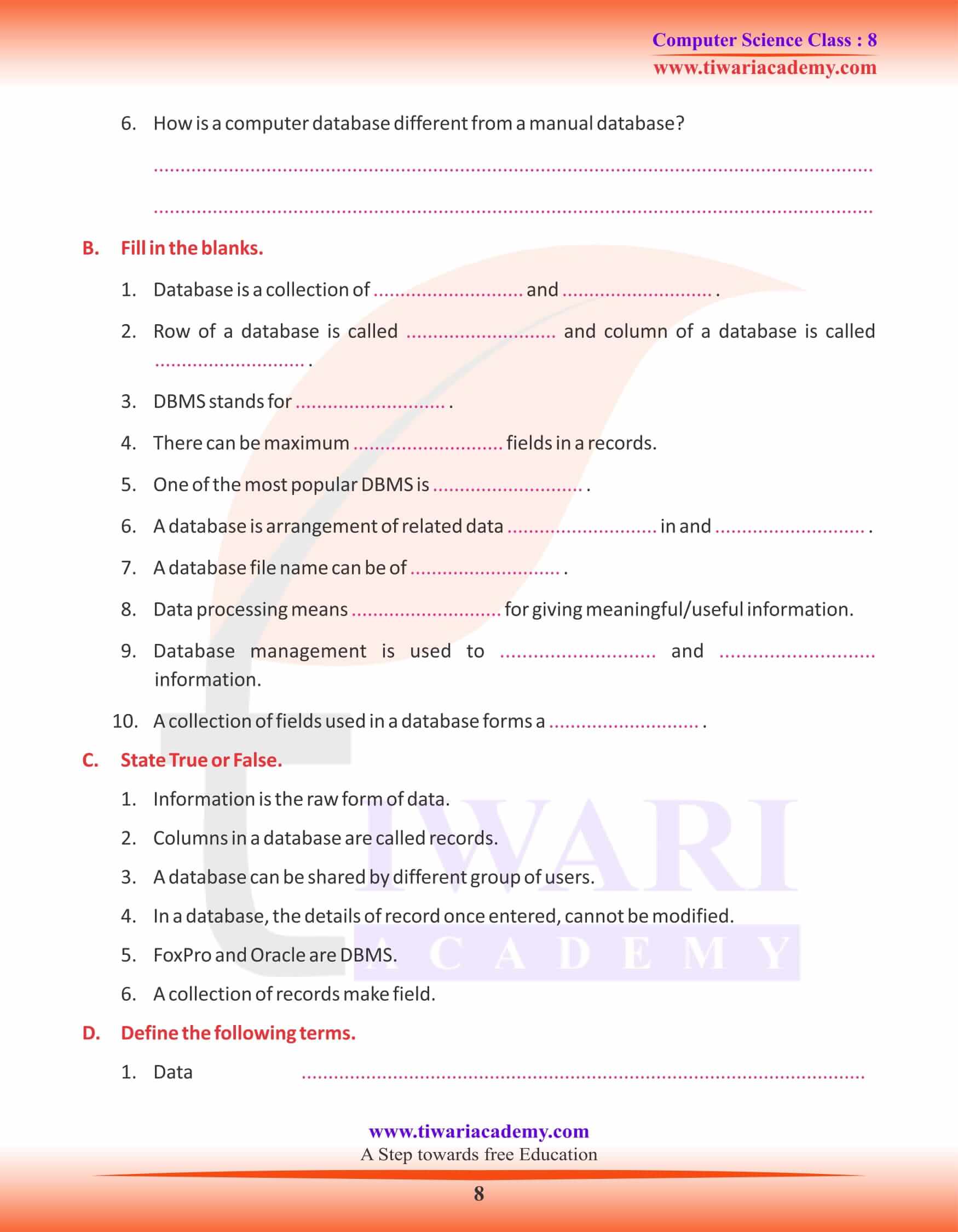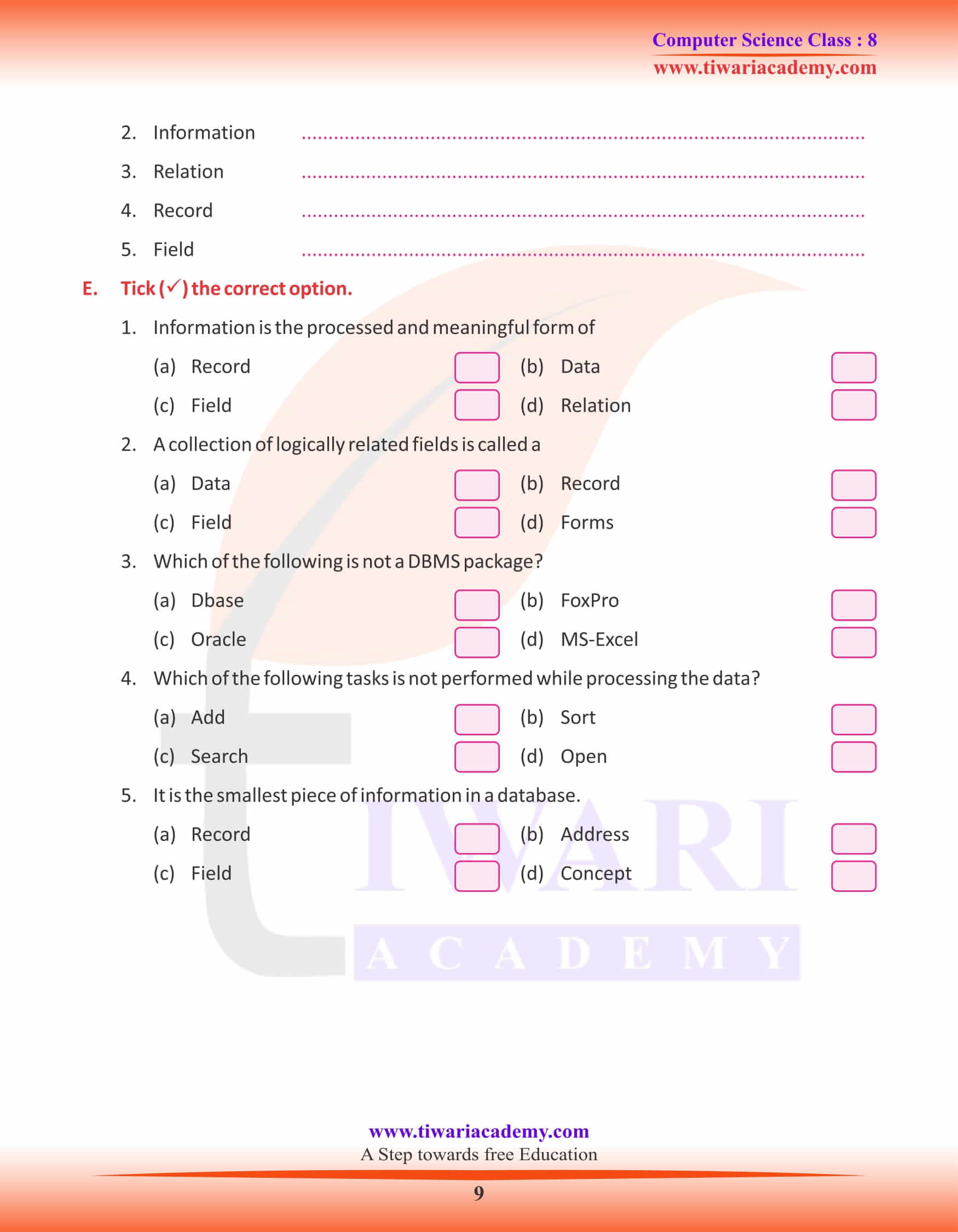NCERT Solutions for Class 8 Computer Science Chapter 2 Introduction to Database in English medium updated for CBSE and State board session 2025-26. Grade 8 Computer book chapter 2 is all about database management and its implementation in programming.
Class 8 Computer Science Chapter 2 Introduction to Database
Database Management
One of the major strength of computer is its storage capabilities. It stores lots of
data in the storage device like floppy disk, hard disk or CD Rom. Data is nothing but the raw form of information. Let’s discuss about a powerful and flexible system used to store information in a structured way— the database.
WHAT IS A DATABASE
Database refers to the collection of data and information in form of records in an organised way. So we can conclude that Database is an organised collection of inter-related records.
STRUCTURE OF A COMPUTER DATABASE
A good example of inter-related records can be a teacher’s register which contains all the necessary information of a student studying in his/her class. The information may consist of student’s name, father’s name, date of birth, occupation and address etc. All these information taken as a group forms a record and on each of the item/ information is called a field. Hence a student’s name is treated as field and the group of all other information are treated as a record. In teacher’s register following entries are done.
- 1. Student’s name
- 2. Father’s name
- 3. Date of birth
- 4. Occupation
- 5. Address
When we enter the above details in the register then the Register is a Database File. Student’s name or any other data is a field. But when all these fields are taken together then they form Records. Records are stored in the database files in the form of columns. We may conclude from here that the information is stored in the form of records (Rows) and field (Columns) in a database.
Once the information is collected to create a database the same information can be retrieved on the basis of some criteria i.e. Name wise, Date of birth etc.
All computer database have the following structure:
• A particular kind of information such as name, phone no., roll no., etc. is called a field.
• A collection of related field is called a record.
• A collection of related records is called a database.
UTILITY OF DATABASE
A database kept on a computer-based system has several notable advantages over a manual record system, which is kept on a paper.
ORGANISED DATA
In database, useful data is always collected and stored in an orderly manner. For example, an orderly inventory system of a departmental store, can tell the manager the stock level of all the items in the store.
SYNTHESIZED INFORMATION
The main intention of a database is to provide information to number of applications as and when required. Such an electronic database would permit not only retrieval of data but also addition, subtraction and deletion of data to maintain up to date information. A census is a true example of how much information can be synthesized from a database.
EASY TO USE
The main advantage of using computer based database is its user flexibility. The paper-based system can also provide us the standardization collection but the most important part is the retrieval of information in the required format. Different users may require different types of information from the common database bank. A database can handle grouping and regrouping tasks easily and we need not worry about the data being disorganized.
MULTIPLE DATABASE
While there are different departments in any organization, some items of data are common to many departments. It is very important that the same data items reading identically across all the departments should be stored in one central system.
SHARING DATA
Data sharing is the opposite side of data integration. If the system is designed in the way that all the departments can share data from the central database, it helps the business to reduce the processing cost and improve the communication among the departments.
DATA PROCESSING
Data Processing means transformation of data for giving meaningful/useful information. This information can be used to carry out any business/scientific activities. When electronic systems like computers etc. are used for data processing, the system is called as Electronic Data Processing. For carrying out any scientific or business activities through computer, we need some basic data i.e. raw data to produce any desired output. On the basis of this data and by giving commands or instructions to the computer, we can generate our desired reports.
WHAT IS DBMS?
The collection of data, organisedly stored in a file is called database file and the process or the software which helps us to interpret the data into meaningful information of a Database with some predefined relation between the fields is known as Database Management System or DBMS.
Application of Database Management
Database management is used to manage and store information. Managing the data means the arrangement of information in a particular manner/sequence. Database being a multitasking software can handle creation, deletion and modification of many fields.
Importance of database in many fields:
- The data should be properly sorted and indexed for catalogue management.
- Database are used in hotels, offices for inventory controls and billing.
- Database helps the doctor in keeping complete record of patients, their disease and treatment etc.
- Database are used by scientists to record their readings and research work.
- Database are used in banks and financial institutions for accounting etc.
- Database are used by Income Tax Department for keeping income tax payees’ record.
- Finally, the database is used in every possible department of life.
